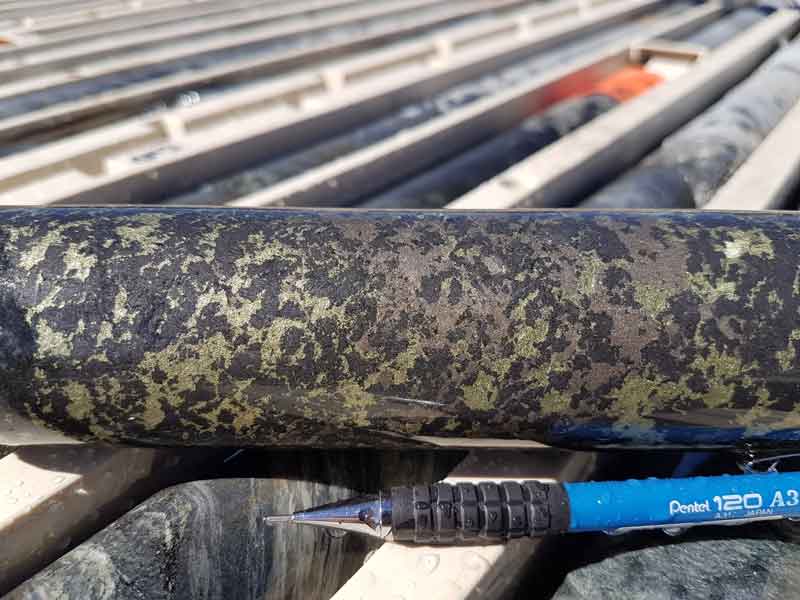Silver City hits copper target in follow-up drilling at Copper Blow
Mining
Mining
Silver City Minerals is just two holes into a follow-up drilling program at its Broken Hill Copper Blow project — and the explorer has already hit strong copper sulphide mineralisation.
Strong copper sulphide mineralisation has been identified in numerous massive magnetite-sulphide veins in both holes, Silver City reported on Monday.
The veins are characteristic of iron oxide copper-gold deposits (IOCG) such as those which occur in Queensland (Ernest Henry and Selwyn) and in South Australia (Olympic Dam and Prominent Hill).
These range in size from small high grade deposits at Tennant Creek to mega-deposits such as Olympic Dam (+10 billion tonnes) and are an import source of not only copper, but gold and uranium.
Expanded drilling program
Silver City originally planned to drill three diamond holes to test the extent and continuity of mineralisation down dip and down plunge of existing copper and gold intersections.
However, encouraging visual results and a new geological interpretation has prompted the company to drill a fourth hole. The third hole is currently underway.
Previous drilling delivered initial results that provided the company with several “high quality” follow-up targets.
Copper Blow is located 20km south of Broken Hill, which is traditionally known for silver, lead and zinc – but investigations by Silver City show this western NSW mining district also contains an abundance of copper and gold.
On target

One of the holes drilled was collared close to an earlier drill hole that intersected two zones of high grade copper-gold mineralisation.
Prior drilling of these zones returned results of 4 metres at 6.1% copper and 4.2 grams of gold per tonne, including 1 metre at 11.3 per cent copper and 10.7 grams of gold, and 2 metres at 2.4 per cent copper and 0.8 grams of gold.
The new hole was designed to test for deeper extensions to these zones and was drilled to 300.4 metres.
Geological interpretation suggests that the down-dip extensions of both zones were encountered.
The second hole, meanwhile, was drilled to 386 metres to test the continuity of grade between intersections in two historic holes that returned 11.8 metres at 6.7 per cent copper and 1.92 grams of gold and 19.2 metres at 1.8 per cent copper.
The hole encountered similarly broad zones of strong biotite-silica alteration, with vein clusters between 284 and 295 metres, 308 and 312 metres, 324 and 327 metres and 340 and 374 metres.
Hole extension
Silver City has also decided to extend a previous reverse circulation while the diamond drill rig is on site.
The hole was originally designed to test beneath one of the earlier high-grade intersections, but high water flows prevented the completion of the hole, which was terminated at 223 metres before the target zone.
Drilling will test the zone 60 to 70 metres vertically below the previous intersection and is expected to begin later this month.
Results from the first hole of the follow-up drilling program are expected in about three weeks.
This special report is brought to you by Silver City Minerals.
This advice has been prepared without taking into account your objectives, financial situation or needs. You should, therefore, consider the appropriateness of the advice, in light of your own objectives, financial situation or needs, before acting on the advice.
If this advice relates to the acquisition, or possible acquisition, of a particular financial product, the recipient should obtain a Product Disclosure Statement (PDS) relating to the product and consider the PDS before making any decision about whether to acquire the product.